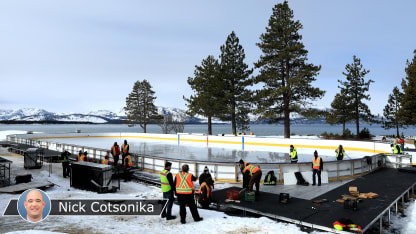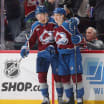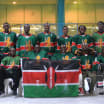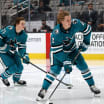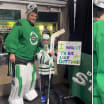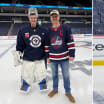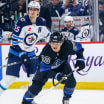"We didn't have as much time, and we just didn't concentrate on [the rest of the infrastructure] as much," Matsuzaki said. "And then as we started laying the plans out, 'Well, we need two locker rooms. We need a storage tent. We need office trailers.' You start thinking of all those other things we need, and then we started placing them."
Unable to make more site visits because of the need to reduce travel, NHL officials relied on maps, satellite imagery and Zoom calls with representatives from Edgewood Tahoe Resort.
They laid out thousands of square feet of tents and office trailers and tried to do it in a way that would reduce the impact on the golf course as much as possible, working around greens, sand traps, water features and trees.
There were inevitable surprises when the NHL arrived in early February to start building.
"We didn't really know that that tree was exactly right where we thought it was until we got here," Mayer said.
They had planned to bring the Mobile Refrigeration Unit and generators the size of semitrailers down a cart path to their parking spot on what is normally the driving range, but they discovered they couldn't go that route because of low tree branches.
"We had to build a whole different roadway to get them into where they needed to go," Matsuzaki said. "So those are the kind of things that we're doing on the fly."
There have been more surprises than usual. Take the wind Monday. It was howling off the lake, and there were no stands to block it.
"Things still come up [in stadiums], but you've usually dealt with them before," Matsuzaki said. " 'How did we solve this in the last football stadium?' But this is all new territory for us."
In the last football stadium, they didn't have to solve problems while wearing masks and social distancing, either. The daily planning meeting across all NHL departments is being held via Zoom, even though many people on the call are now on site.
But they're making it work.
"We looked at this as a challenge, but [it's] a challenge that right now hasn't been a problem at all," Mayer said. "We're building out what we think is going to be a spectacular event."
